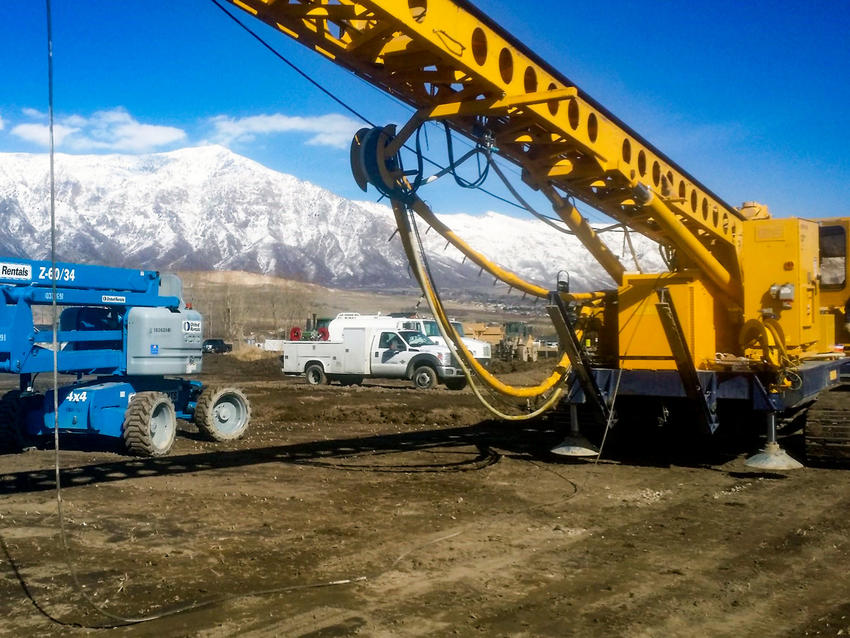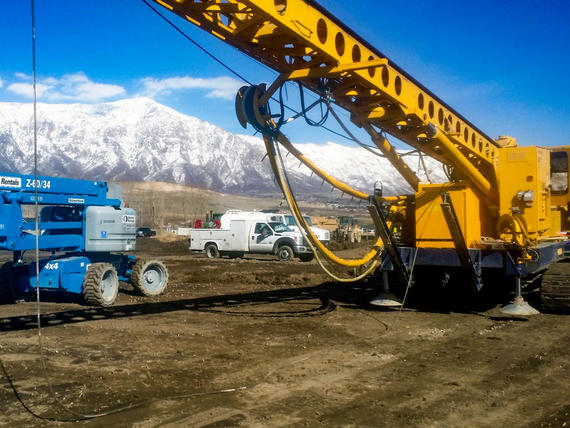In areas where the potential for seismic activity is an important consideration for new construction, Keller’s experience coupled with a range of ground improvement options means that the right solution can be developed for the specific site conditions and project requirements.

The project
Construction of a new, $24 million elementary school was planned on undeveloped land. The general site subsurface soil profile consisted of 1 to 4 ft of surficial lean clay overlaying loose to medium dense silty sand and fine sand to a depth of up to 25 ft. Beneath this was medium-stiff silt. Groundwater was encountered 4 to 5 ft below grade.
The challenge
Given the loose soil conditions in the upper sands, ground improvement was required to meet the maximum allowable static and differential structural settlement of 1 in. and 0.5 in. respectively, as well as total seismic-liquefaction induced settlement of 2 in.
The solution
Keller designed and installed 30-in. diameter vibro aggregate piers to a depth of 16 ft beneath the spread footings to achieve the design bearing pressure of 4,000 psf and also installed piers on an 8-ft grid pattern across the 75,000 sq. ft. slab footprint for liquefaction mitigation. Post-installation testing verified the design assumptions. A total of 1,420 piers were installed for the project. Despite adverse winter weather conditions in the early part of the work, Keller completed the ground improvement program one week ahead of schedule.

